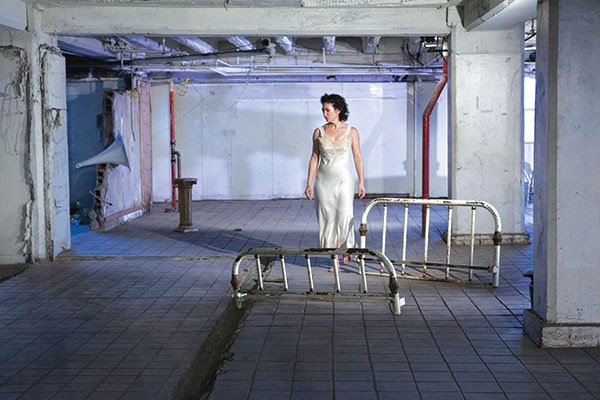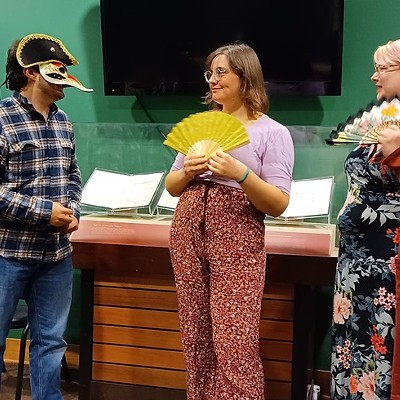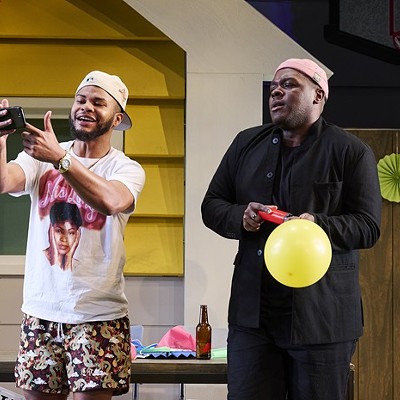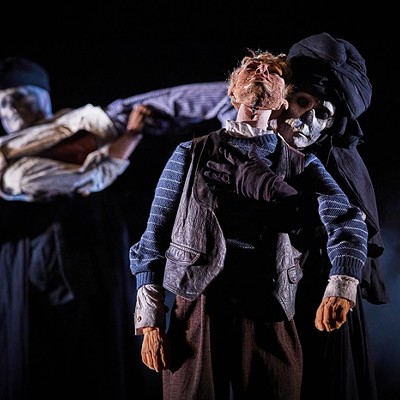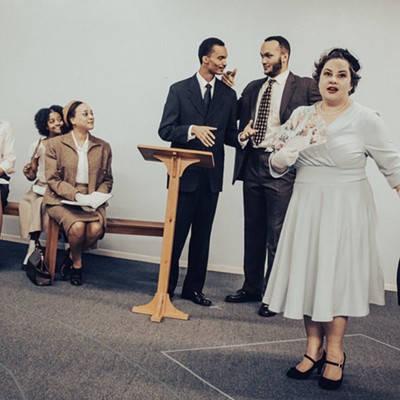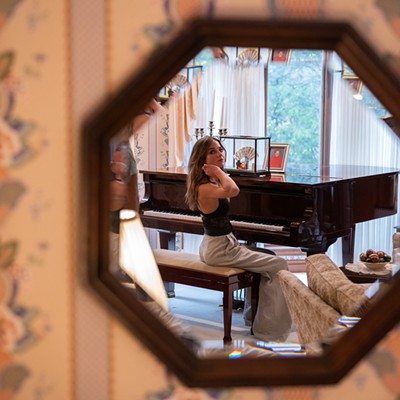There's a cliché that one's life passes before one's eyes before death. That's only the slimmest description of Quantum Theatre's Dream of Autumn. The production is the world premiere of Sarah Cameron Sunde's translation of a 1999 play by Norway's Jon Fosse — a play that looks at love and death in a landscape (dreamscape?) floating freely in time and space.
The life is that of a nameless Man, lost in his life and in his relationships with his equally nameless Woman, Mother and Father. Never fear: Somebody with a name comes along eventually — not that it matters — and chronological details are collected, if not added up. (The parents' costumes could be from the 19th century, the others' from a modern mall, and none of the attire seems particularly appropriate.)
OK, a European — nay, Scandinavian — depiction of people stalking through death/dream is a class of cliché by itself. But Autumn has humor and even warmth to fight the coldness of Life. Martin Giles imparts a perplexed sensibility to the everyman totally clueless about the women in his life, and detached from the men. Karla Boos plays and poses as his seductress, saying far more in body language than in dialogue. Laurie Klatscher and Gregory Lehane (a real-life married couple) bring comic relief and pathos as the parents. Jennifer Tober provides a shadowy presence and some backstory as Gry, the Man's first wife and child bride.
Quantum's vast setting, in Oakland's former Park Schenley Restaurant, almost but not quite swallows the cast, directed in near-choreography by Sunde. Scene/costume designer Narelle Sissons has added remnants of antique furniture and paint to the exposed rebar and dust of a once-posh restaurant, creating a monochromatic conception of a cemetery. Or at least that's where the characters think they are, only occasionally waking up to the raging improbability of it all. Joe Pino's sound and C. Todd Brown's lighting assist both the illusion and the audience's attention.
The haunting visuals tell a story sometimes at odds with the words. The truth may be somewhere in between.

